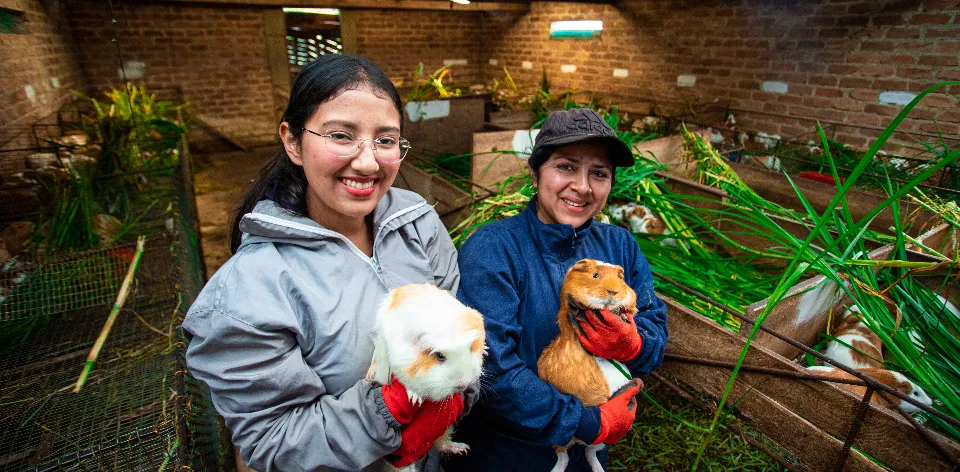 1/4/2024
1/4/2024
The Nariño Guinea Pigs: A Family and Community Project

El Tambo, Nariño (@UPRAColombia, @claudialili76). The peasants of the department of Nariño have been working for several generations raising guinea pigs, a promising productive project with a lot of future in this Colombian region.
Surrounded by the foothills of the Andean Central Cordillera that descends from the heights of the Galeras volcano, lies the municipality of El Tambo, just 37 kilometers from the capital of Nariño: Pasto. The municipality stands out for preserving the traditions of the indigenous peoples of the Quillacingas, Pastos, and Abades, as it was they who included guinea pigs both in their economy and in their diet.
Jair Gómez Guerra, leader of the company Procuyes JG, located in Vereda Villanueva, in El Tambo, told us the following details of his work:
"We have been working with guinea pigs for approximately twenty years. The process is as follows: a classification is made for breeding mothers to start guinea pig production. The female guinea pigs will give you a period of 64 days for the first production and from there you continue working, which is, let's say, the raising aspect; a classification is made by sex: females and males, and they are transferred to the sheds."
Similarly, Mr. Jair explains why El Tambo guinea pigs are recognized as one of the best in Nariño:
"[...] because of the issue of feeding, we have a variety of very variable grasses, providing, in certain grasses, quantities of organic protein. This has brought us many benefits in terms of the taste of the meat. We are carrying out the process of vacuum packing the meat to guarantee a better quality of the product to our customers, who are highly recognized restaurants at the departmental level, as well as in other departments of the country."
Nariño producers are an example of the strength of family and community peasant agriculture, which chooses the path of lawful economies and bets on a socially and economically sustainable productive project. Thus, the breeding, preparation, and consumption of guinea pigs emerge as an opportunity to exchange knowledge, culture, and tradition. With an annual production close to 2,700,000 guinea pigs, the region is a leader in production in Colombia, as it is marketed not only in Nariño but also in Huila, Valle del Cauca, Cauca, and Putumayo.
Regarding the participation of women in this cultural practice, Mr. Jair tells us:
"[...] Well, we are producing around thirty thousand guinea pigs a year. It is very important to highlight the work of women in handling guinea pigs. It has been very nice to work with women, heads of households. What impacts us the most as a company is generating employment and well-being within our community."
Yurany Bastidas, another guinea pig producer residing in El Tambo, Nariño, spoke to us about her experience working on this project:
"It helps us economically, and even more so here, where my mom and I, who are single mothers, take care of the household. So, it helps us a lot to get ahead in our daily sustenance. In this area, most of us who work are women, and it helps us a lot to know about this topic, about these little animals that are so helpful in our family basket. To the peasants, I say let's continue in this beautiful work that is the countryside, let's not go too much to the cities because the countryside also needs hands; it needs women and all the people who want to work in it to get ahead with our families. Come to El Tambo, Nariño, which is a good municipality, very beautiful and with the best guinea pigs in the country."
To meet the faces of the guinea pig project, which bets on the future of Colombian countryside, access the video found at this link.

